Monia Ben Hamouda
About Telepathy and other Violences
Opening—28 April 2023, 6 to 9 PM
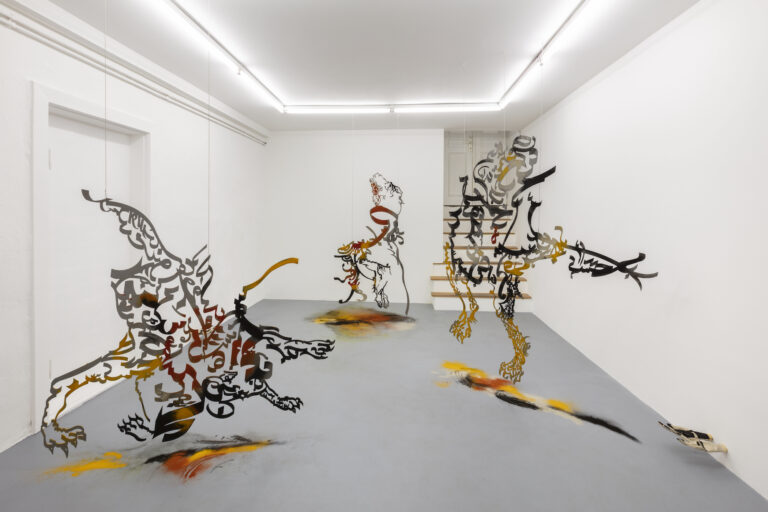
Monia Ben Hamouda, Night of Hinnā, Installation View at Bungalow/ChertLüdde, Berlin, 2021, Photo by Andrea Rossetti, Courtesy of Monia Ben Hamouda, Milan and BUNGALOW/ChertLüdde, Berlin
As part of Berlin Gallery Weekend, Italian-Tunisian artist Monia Ben Hamouda (1991, Milan) presents her solo exhibition About Telepathy and other Violences at ChertLüdde. Living between al-Qayrawan and Milan, her work reflects her dual Islamic and Christian heritage, sculpting calligraphic references that blend identity and meaning, specifically emphasizing aniconism in Islamic tradition.
On the floor of the exhibition, wood sculptures bandaged with cloth rest among twelve hanging steel sculptures to highlight the contrasts between the dynamic gestures and static pauses in their form.
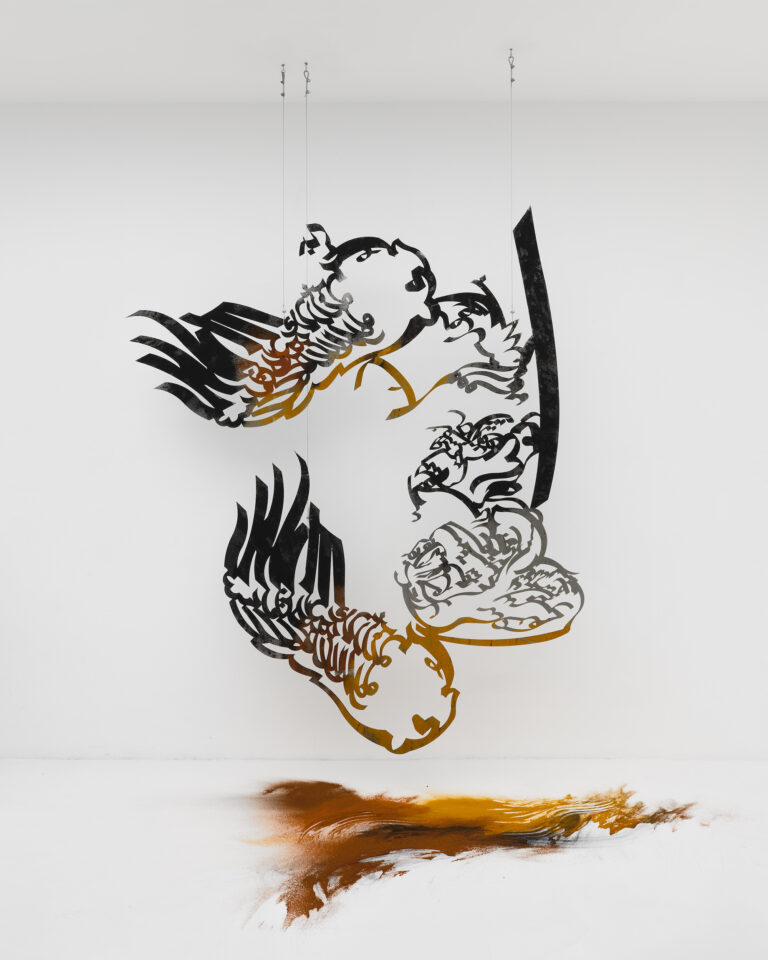
Monia Ben Hamouda, Denial of a Redwing Blackbird (Aniconism as Figuration Urgency), 2022; Ben Hamouda / Michele Gabriele, Remarkably Clear, Almost Invisible, installation view at ASHES/ASHES, New York, 2022; Photo by New Document, Courtesy of ASHES/ASHES, New York and Monia Ben Hamouda, Milan and ChertLüdde, Berlin
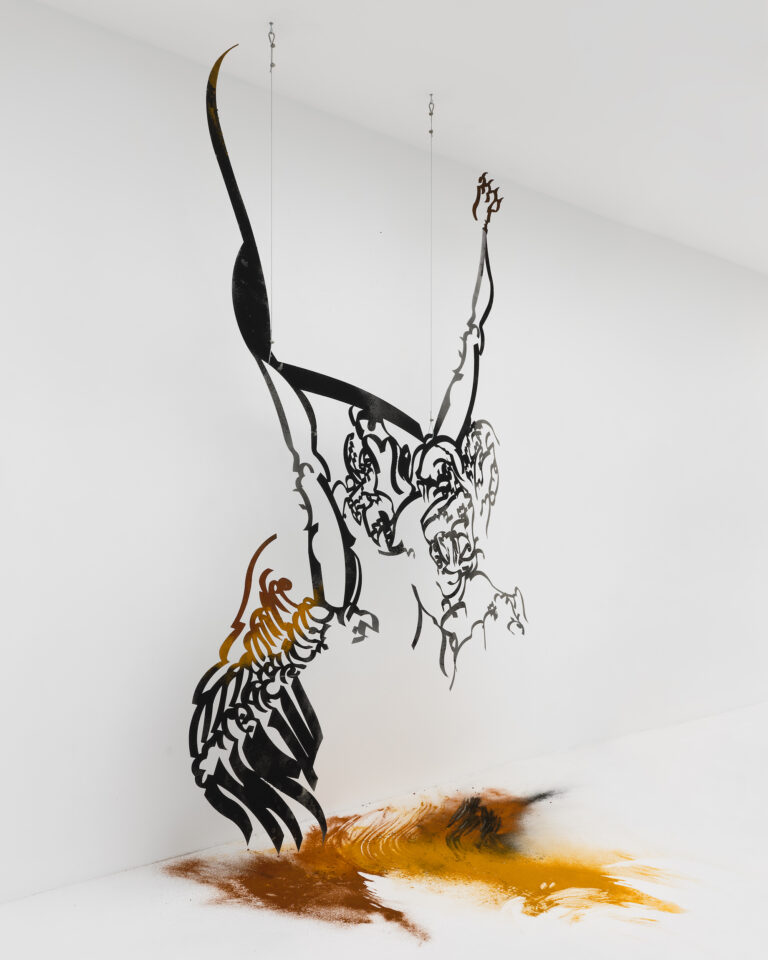
Monia Ben Hamouda, Denial of a Red-winged Blackbird fighting a Jinn (Aniconism as Figuration Urgency), 2022; Ben Hamouda / Michele Gabriele, Remarkably Clear, Almost Invisible, installation view at ASHES/ASHES, New York, 2022; Laser cutted iron, spice powders, Photo by New Document, Courtesy of ASHES/ASHES, New York and Monia Ben Hamouda, Milan and ChertLüdde, Berlin
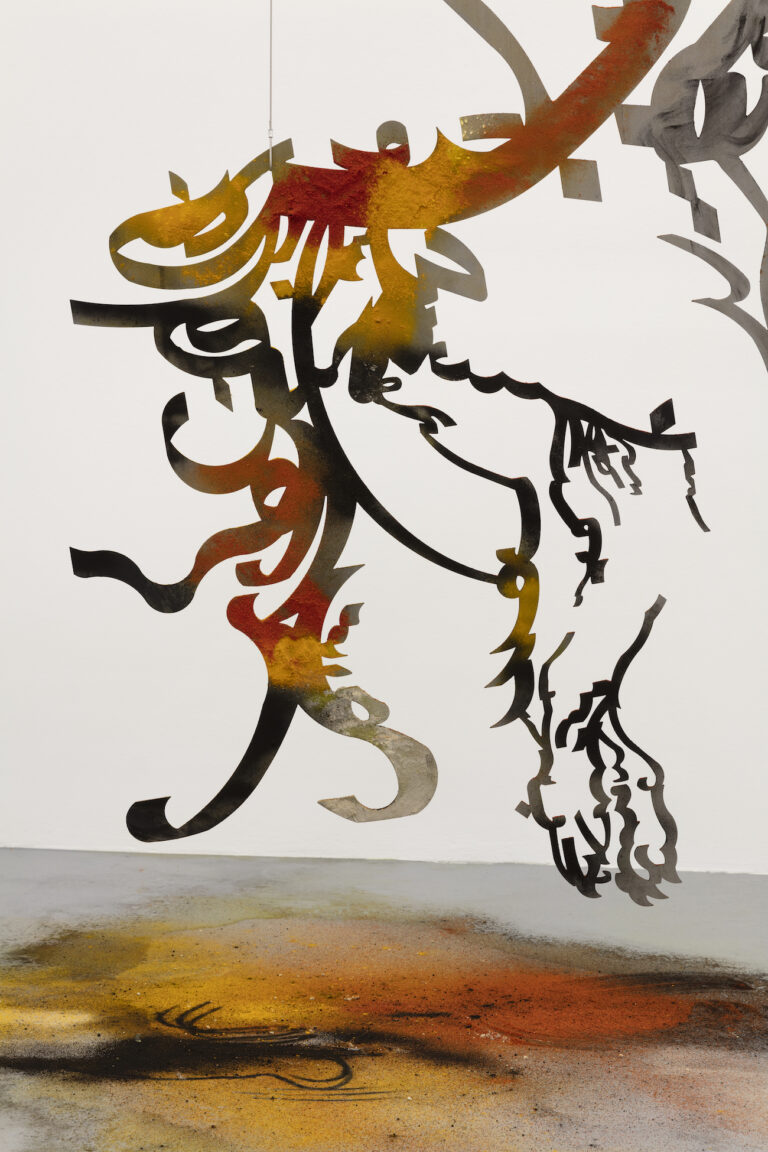
Monia Ben Hamouda, Aniconism as Figurative Urgency (Thalaathah), 2021, Installation view of Night of Hinnā, Bungalow/ChertLüdde, Berlin, 2021. Photo by Andrea Rossetti, Courtesy of Monia Ben Hamouda, Milan and BUNGALOW/ChertLüdde, Berlin and MMAT Mauro Mattei Art Trust Collection, London
Part of a personal shamanic process centered on recovery and resilience, the laser-cut steel sheets have been dressed with different spices and powders (chili, cumin, curry, henna, coconut charcoal, dried beetroot, salt). Cut into shapes that abstract traditional Islamic calligraphy, each of these works is composed of repeated layers, installed one behind the other to create the illusion of movement. The artist’s visual focus on representing movement is a reference to migration, manifesting allusions to the pilgrimage to Mecca and the Hajj’s stone-throwing ritual. Walking through the exhibition, the layers of steel sheets begin to reveal a figurative stone that moves through the pieces.
Previously exhibited in 2021 at the gallery’s project space for emerging artists called Bungalow, Ben Hamouda joined the gallery in 2022 as a represented artist.
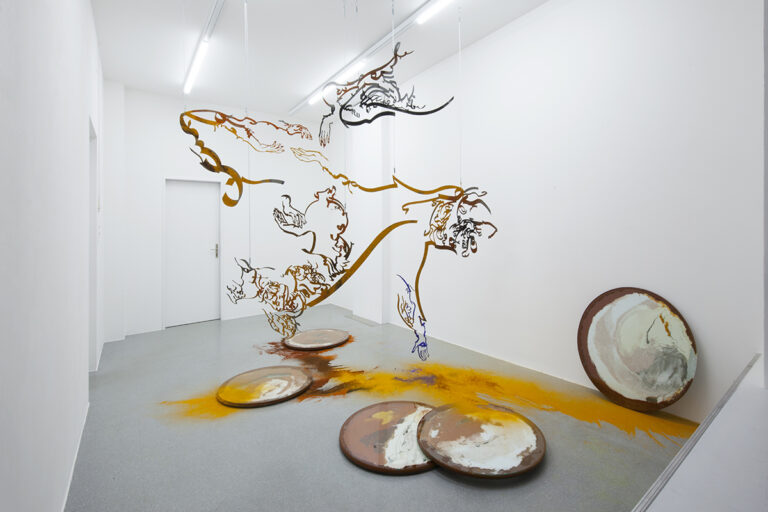
Installation view from Monia Ben Hamouda’s solo presentation The Eye, the Hands, the Lunacy of Lunar Sightings curated by Anissa Touati at Jevouspropose, Zürich CH. Courtesy of Monia Ben Hamouda, Milan and ChertLüdde, Berlin
Patrizio di Massimo
Out Like a Light
Opening—9 June, 2023, 6 to 8 PM
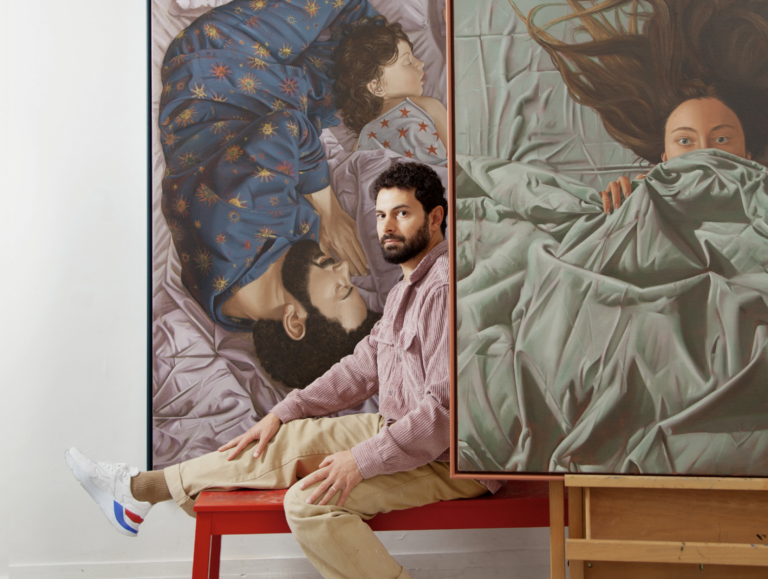
Patrizio di Massimo in his studio, London, 2022; Photo by Eleonora Agostini
Italian painter Patrizio di Massimo unveils the art world’s most intimate yet universal moments in his upcoming solo exhibition titled Out Like a Light at ChertLüdde. Exploring the realms of portraiture, di Massimo presents curators and artist friends as his sleeping muses, creating whimsical and thought-provoking large-scale paintings that delve into art history and contemporary themes pertaining to identity, self-determination and recognition.
Born in 1983 in Jesi, di Massimo is a self-taught painter who made a radical shift from a multidisciplinary practice to focus exclusively on painting in 2015. Since then, portraiture has become the centerpiece of his artistic journey, characterized by a distinct compositional fantasy, Baroque-like drapery, and a fascination with personal appearances. His work embodies the vitality and enchanting details reminiscent of Italian cinema a la Fellini, evoking the extravagance of figurative painting.
In Out Like a Light, di Massimo assumes the role of an uncanny witness to various sleeping arrangements. These moments capture the subjects in a state of both connection and disconnection, protection and vulnerability within their immediate surroundings. The depicted figures, many of whom hail from the Berlin art scene, are portrayed in serene slumber, often in the comforting embrace of their homes or studios. Di Massimo accentuates the uniqueness of each person or couple by surrounding them with carefully chosen props and textiles. Notably, the exhibition features a self-portrait alongside the artist’s wife and a painting of his daughter, altering the perspective of the observer within these artworks.
Out Like a Light invites the audience to partake in the shared dreams of the artist and his subjects, providing a window into their world. Keen viewers of the exhibition will also notice the recurring motif of an animal incorporated into almost every canvas—a playful game of hide and seek reminiscent of a father’s interaction with his young daughter.
Patrizio di Massimo (b. 1983, Jesi) lives and works in London. He graduated from the Slade School of Fine Art, London and the Academy of Fine Arts of Brera, Milan.
Over the past decade, di Massimo has cultivated a distinct aesthetic that merges figuration with elements from Italian history, particularly drawing inspiration from Baroque tones and dramatic portraiture. His artistic representations exhibit an uncanny and sometimes grotesque quality, exploring various aspects of human nature.
Following his 2013 solo exhibition at Gasworks in London, which delved into orientalist and otherizing attitudes prevalent in Victorian society and their complex and seductive existence in the present, di Massimo has shifted his focus towards a more universal exploration of human nature. His works ambiguously engage with the concept of masculinity, serving as personal interpretations of a broader cosmology that incorporates friends, family, and fictional characters. Whether engaged in conflict or embraced in intimacy, whether depicted in private domestic spaces or on imaginary stages, his subjects confront the real world through their vulnerability and the performative display of emotions. Despite being bathed in theatrical light or adorned with velvet brocade, these characters remain intimately connected to our own desires and frustrations.
Currently, di Massimo’s most comprehensive retrospective exhibition to date, titled Antologia / Anthology (2013–2023), is on view at the Civic Museums of Palazzo Pianetti and Fondazione Cassa di risparmio in Jesi.
Clemen Parrocchetti
Handmade Militancy
Opening—28 April 2023, 6 to 9 PM
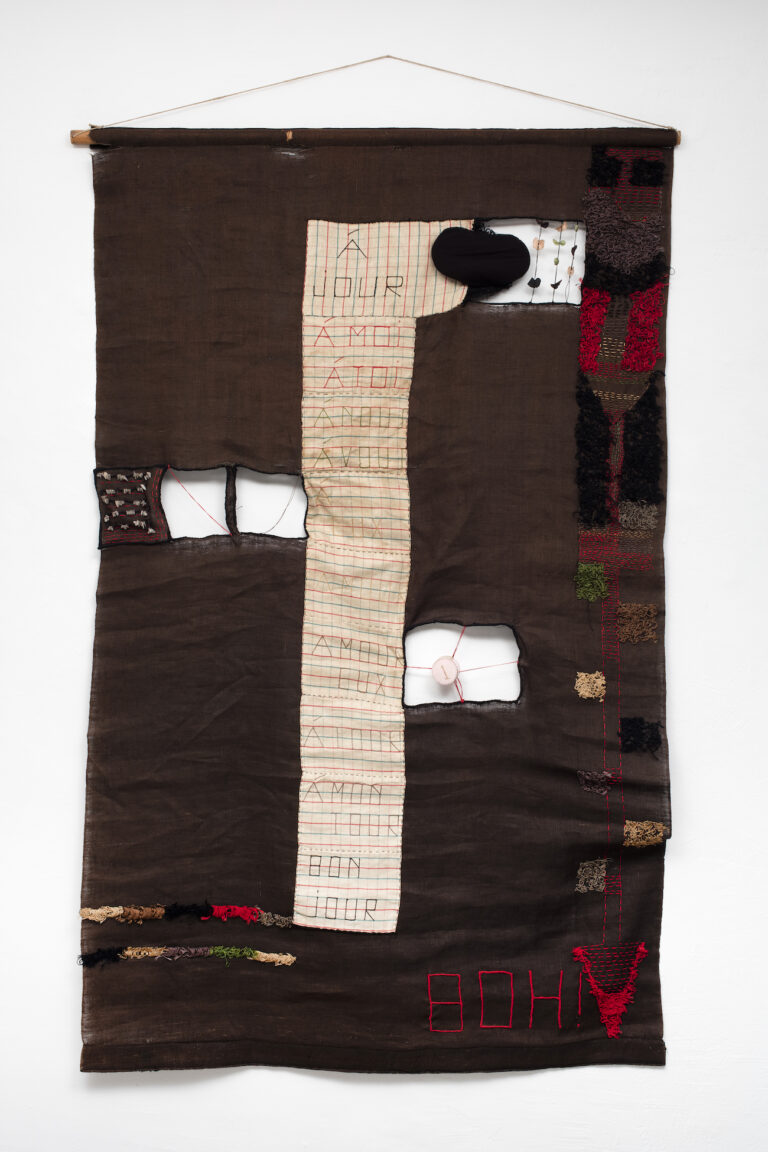
Clemen Parrocchetti, Senza titolo (Boh!) / Untitled (Huh!, 1977. Photo by Antonio Maniscalco. Courtesy of Clemen Parrocchetti Archive, Milan and ChertLüdde, Berlin
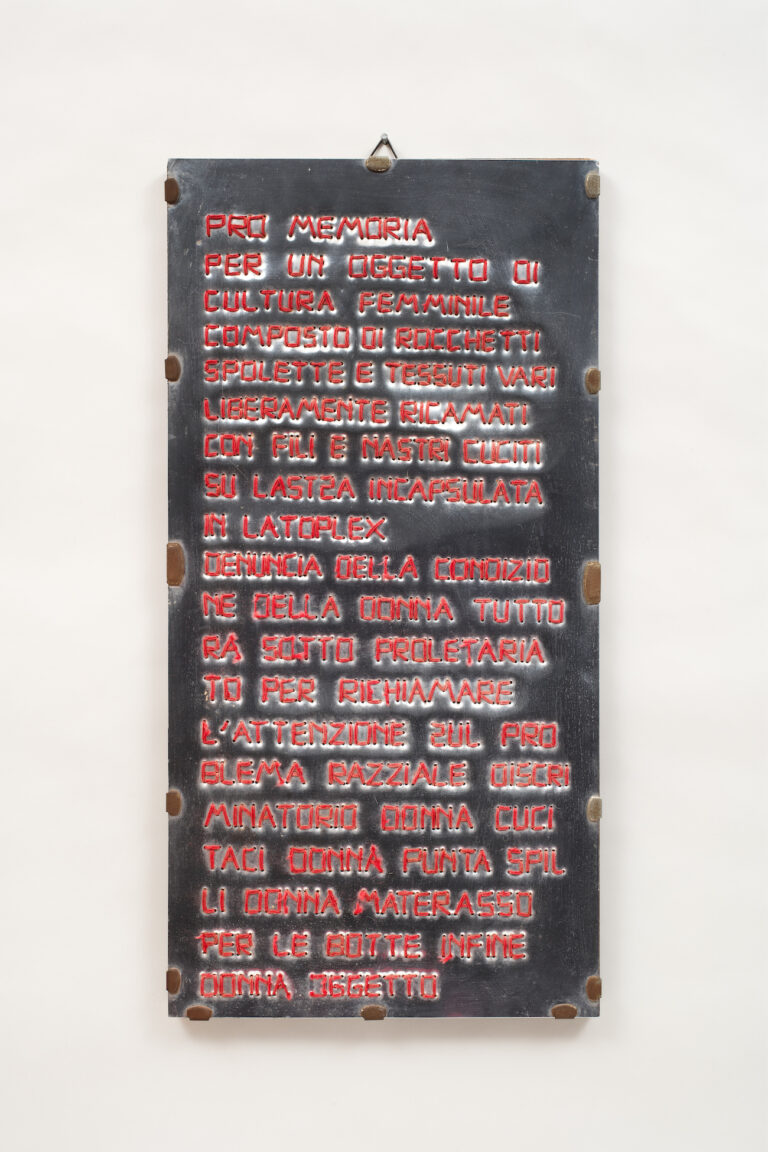
Clemen Parrocchetti, Promemoria per un oggetto di cultura femminile / Memo for an object of female culture, 1973. Photo by Antonio Maniscalco. Courtesy of Clemen Parrocchetti Archive, Milan and ChertLüdde, Berlin
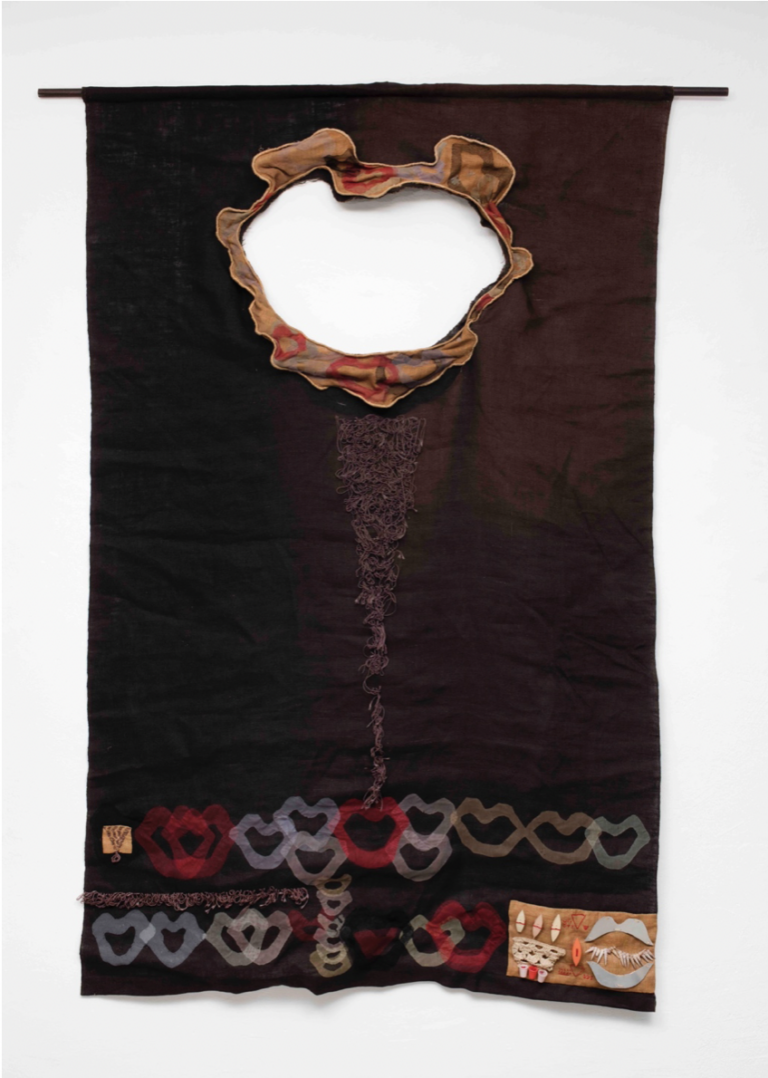
Clemen Parrocchetti, Per la vita, sempre/ For life, always!, 1977. Photo by Antonio Maniscalco. Courtesy of Clemen Parrocchetti Archive, Milan and ChertLüdde, Berlin
Handmade Militancy presents largely unseen works by Clemen Parrocchetti (1923-2016, Milan) made during the most heated years of 1970s Italian feminism. Parrocchetti found her visual grammar in the materials of domestic labor – needles, spools, bobbins, cooking utensils, medicaments, textiles – repurposed into the subversive tools of denunciation and protest. Parrocchetti’s work speaks to women’s fights for equal pay, divorce bills and the right to abortion, issues that after almost half a century remain at the center of political debate. Handmade Militancy, the first exhibition of Parrocchetti’s work outside of Italy since her death, includes tapestries, assemblages, sewn drawings, a video and archival documentation the artist collected during her militant years.
Parrocchetti trained at Milan’s Brera Fine Arts Academy while she was already a mother of five. From the early 1970s, Parrocchetti’s nascent feminist voice found expression in works she called “Objects of Feminine Culture,” which she exhibited in alternative art spaces in Milan. In 1978 she joined the feminist Gruppo Immagine of Varese, pioneering in conjugating art and feminist militancy, and showed with them at the 1978 Venice Biennale. While the group disbanded in the mid-1980s, Parrocchetti carried a feminist ethos in her artmaking for over five decades.
Forsaking the conventional picture frame, the works on display critique and contest female subjugation and objectification, from within the confines of domesticity. The manifesto Memorandum for an Object of Female Culture (1973) presents inflammatory words of red thread painstakingly sutured onto an aluminum sheet for the “still sub-proletarian” woman “pin cushion/mattress/object.” With handmade tapestries, Parrocchetti marches on her call to resist submission and invoke women’s liberation. The title of each work (insistently resonant to this day) is a protest slogan: “Chastity Belt (Watch out for commodification),” “Under custody and repressed,” “Dreaming gender equality” and “Hope for Liberation after Resistance.”
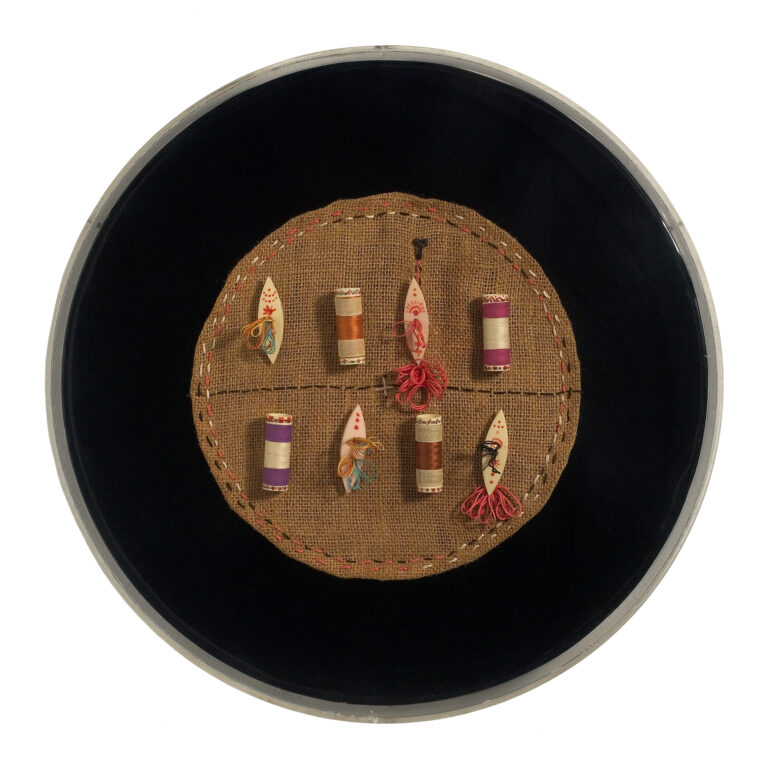
Clemen Parrocchetti, Speranza di parità / Hope for equality, 1973. Photo by Antonio Maniscalco. Courtesy of Clemen Parrocchetti Archive, Milan and ChertLüdde, Berlin
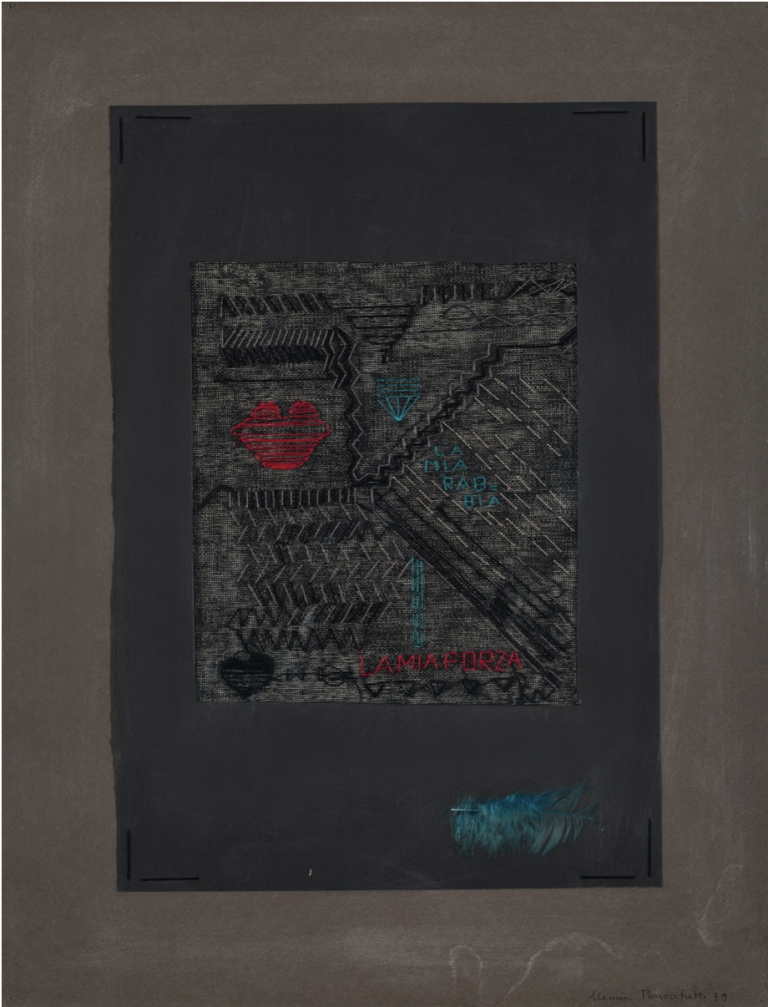
Clemen Parrocchetti, Senza titolo (La mia rabbia, la mia forza) / Untitled (My anger, my strength), 1979. Photo by Antonio Maniscalco. Courtesy of Clemen Parrocchetti Archive, Milan and ChertLüdde, Berlin
The exhibition is curated by Sofia Gotti and Caterina Iaquinta and it has been possible thanks to the collaboration of the Clemen Parrocchetti Archive.
Born into a family of the Lombard aristocracy, Clemen Parrocchetti (1923-2016, Milan) trained in painting at the Brera Academy, which she graduated from in 1956. Across the 1960s, her painterly style shifted from an existentialist realism to an abstract and surreal language. While partaking in the feminist momentum of the early 1970s, her artistic practice underwent a radical change when she started to use textiles and small household objects in her early assemblages, but above all with the introduction of embroidery. In 1978 she joined the Gruppo Immagine of Varese, with which she participated in the 1978 Venice Biennale – a collaboration that lasted for almost all of the 1980s. Going further in her exploration of textiles and embroidery, the 1980s see her explore the themes of classical mythology with a sensitivity towards the metamorphosing body. In her final decade, Parrocchetti focused on the animal world and her relationship to it, formalized in numerous drawings and paintings.
